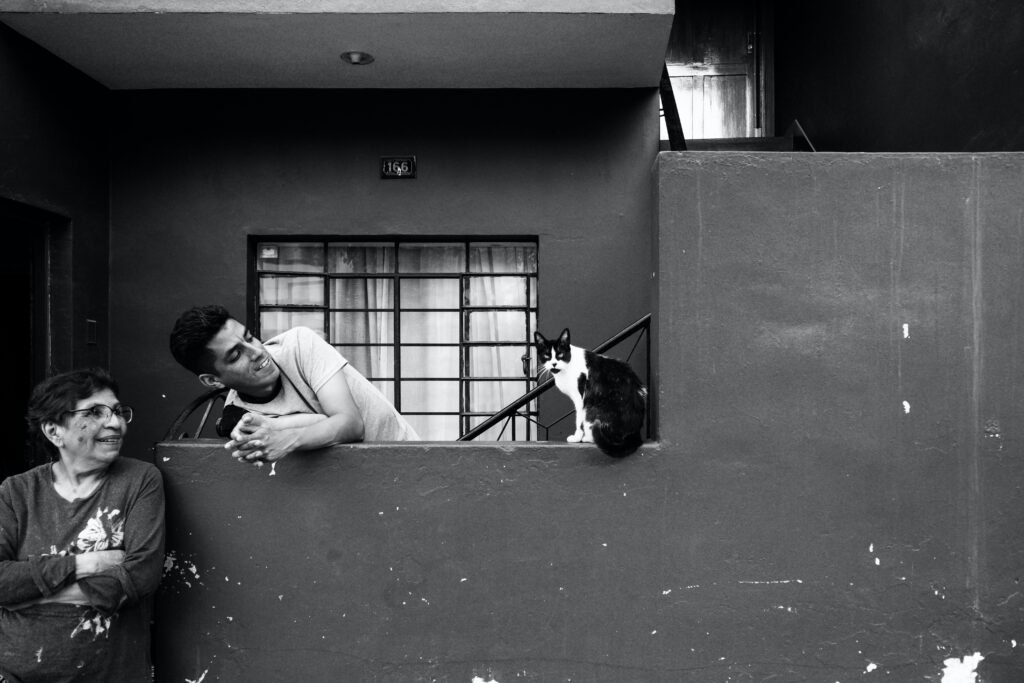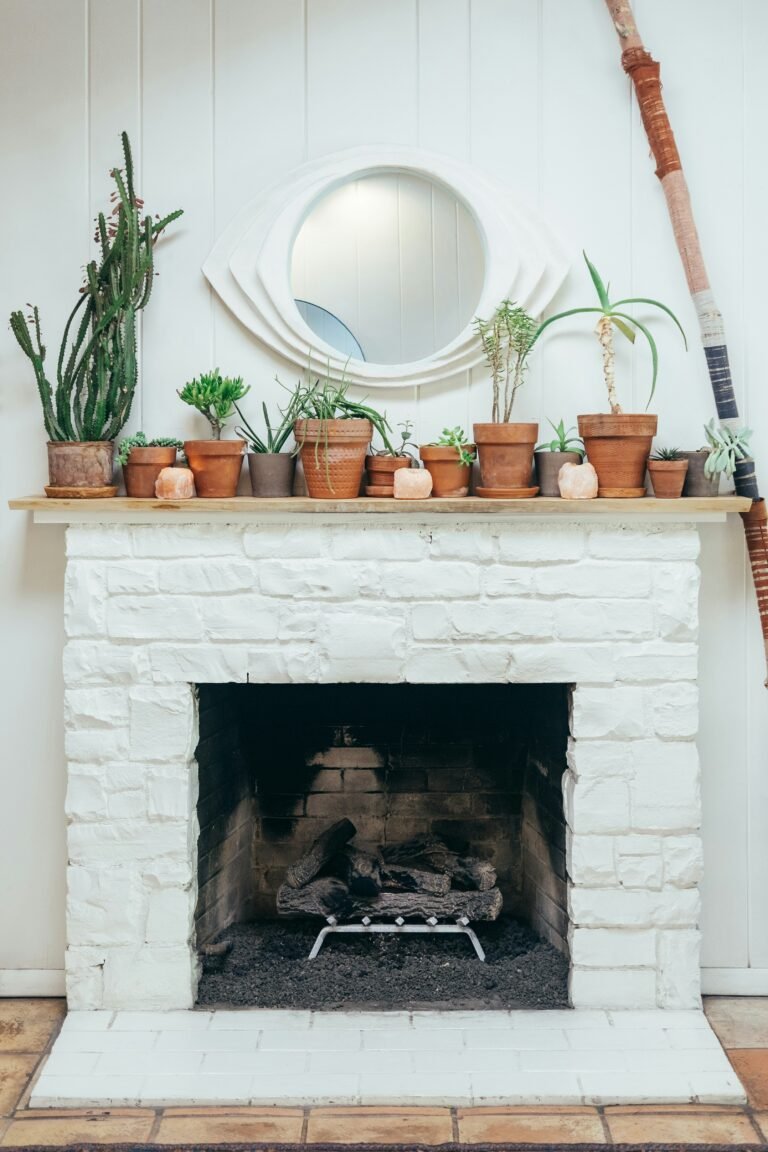Imagine coming home to a cozy living room every day, with a fireplace that ignites a sense of warmth and comfort. If you’ve been longing to elevate your fireplace’s aesthetic appeal, we have just the solution for you. Say goodbye to dull and boring, and hello to a stunning transformation. In this article, we will show you how to completely revamp your fireplace with a DIY brick accent wall, breathing life into your space and creating a visually captivating focal point. Get ready to embark on a fun and creative journey that will leave you with an eye-catching fireplace that will undoubtedly steal the show in your home.

This image is property of images.pexels.com.
Get Your DIY Brick Accent Wall
Materials and Tools Needed
To transform your fireplace with a DIY brick accent wall, you’ll need the following materials and tools:
Brick tiles
Brick tiles are essential for creating an authentic brick look without the need for extensive masonry work. They come in various styles and colors, allowing you to customize the appearance of your fireplace.
Brick adhesive
Brick adhesive is used to securely attach the brick tiles to the surface of the fireplace. Make sure to choose a high-quality adhesive that is specifically designed for brick installation.
Level
A level is necessary to ensure that the bricks are properly aligned and straight. This tool will help you achieve a professional-looking finished product.
Trowel
A trowel is used to apply the brick adhesive onto the surface and to evenly spread the adhesive before placing the brick tiles. Opt for a trowel with the right size and flexibility for your project.
Grout
Grout is the material used to fill the gaps between the brick tiles. It enhances the overall appearance and stability of the brick accent wall. Choose a grout color that complements the bricks and your desired aesthetic.
Tile spacers
Tile spacers will help you maintain even spacing between the brick tiles. They ensure that the finished wall looks neat and uniform. Different sizes of tile spacers are available, so choose the appropriate size for your project.
Measuring tape
Accurate measurements are crucial for a successful DIY project. A measuring tape will help you determine the amount of materials needed and ensure precise placement of the brick tiles.
Safety goggles and gloves
Safety should always be a priority when working on any project. Safety goggles will protect your eyes from debris, and gloves will keep your hands safe from any adhesive or grout.
Sponge
A sponge is used to wipe away excess grout and clean the surface of the brick tiles. It’s important to keep the bricks clean throughout the installation process for a polished final result.
Preparation
Before beginning the installation process, it’s essential to prepare the area and gather all necessary materials. The following steps will guide you through this crucial preparation phase:
Measure the fireplace
Start by measuring the dimensions of your fireplace. This will help you estimate the amount of brick tiles and other materials you’ll need for the project.
Choose the brick tile style
Consider the desired appearance you want to achieve. Whether you prefer a traditional or modern look, there are brick tile styles available to suit every taste. Look for inspiration online or visit a local home improvement store to explore your options.
Purchase the materials
Once you have decided on the style and measured your fireplace, it’s time to purchase the brick tiles, adhesive, grout, and all other required materials. Ensure you have everything on hand before starting the project to avoid delays.
Clear the area around the fireplace
Remove any furniture, decor, or obstacles around the fireplace area. This will provide you with ample space to work safely and efficiently. It’s crucial to have a clutter-free environment when installing a brick accent wall.
Protect the surrounding surfaces
Cover nearby surfaces, such as the floor and adjacent walls, with drop cloths or plastic sheets to protect them from any accidental spills or splatters. This precaution will save you from extra cleanup later on.
Upgrade Your Fireplace With A Brick Accent Wall
Preparing the Surface
To ensure a long-lasting and visually appealing brick accent wall, proper preparation of the fireplace surface is essential. Follow these steps to prepare the surface for the brick installation:
Clean the fireplace surface
Thoroughly clean the surface of the fireplace. Remove any dirt, dust, or debris that may have accumulated over time. A clean surface will provide better adhesion for the brick tiles.
Repair any damaged areas
Inspect the fireplace surface for any damages, such as loose bricks or cracks. Repair these areas before proceeding with the installation to ensure a smooth and stable surface.
Sand the surface
Use sandpaper or a sander to lightly sand the entire fireplace surface. This step helps create a rough texture, allowing the adhesive to adhere better to the surface.
Apply a coat of primer
Applying a coat of primer to the fireplace surface will further enhance the adhesion of the adhesive. Follow the manufacturer’s instructions for the specific primer you are using, and let it dry completely before proceeding.
Installing the Brick Tiles
Now that the surface is properly prepared, it’s time to install the brick tiles. Follow these steps for a successful installation:
Dry fit the brick tiles
Before applying adhesive, lay out the brick tiles on the fireplace surface to ensure they fit properly. This step allows you to visualize the final result and make any necessary adjustments.
Mix the brick adhesive
Follow the instructions on the adhesive packaging to create the appropriate mixture. Use a trowel to mix the adhesive to the recommended consistency. Be sure to work in small batches to prevent the adhesive from drying out.
Apply adhesive to the first brick tile
Using a trowel, apply a layer of adhesive to the back of the first brick tile. Ensure that the adhesive is evenly spread across the entire surface of the tile.
Press the tile onto the surface
Carefully press the first brick tile onto the fireplace surface, starting from the bottom. Apply gentle pressure to ensure proper adhesion. Use a level to check that the tile is straight and adjust if necessary.
Create a uniform layout
Continue applying adhesive to the back of each brick tile, positioning them closely together. Maintain a consistent pattern and alignment to achieve a professional and uniform brick wall.
Use tile spacers for even spacing
Place tile spacers between the brick tiles to ensure even spacing. These spacers will help you maintain a consistent and visually pleasing layout. Pay attention to the recommended spacing size for your specific tiles.
Cut tiles as needed for corners and edges
Measure and mark the areas where you need to cut the brick tiles to fit corners, edges, or any irregular spaces. Use a wet saw or a tile cutter to make precise cuts. Always wear protective goggles and follow the manufacturer’s instructions when operating cutting tools.
Apply adhesive to additional tiles
As you continue installing the brick tiles row by row, apply adhesive to each tile and press it onto the surface, following the same process as before. Be mindful of the spacing and alignment as you progress.

This image is property of images.pexels.com.
Grouting the Brick Wall
Once all the brick tiles are installed, it’s time to grout the wall. Follow these steps for a professional-looking finish:
Mix the grout
Mix the grout according to the manufacturer’s instructions, ensuring you achieve the desired consistency. Avoid mixing more grout than you can work with within a reasonable time frame to prevent it from drying out.
Apply grout to the gaps between bricks
Using a grout float, apply the mixed grout to the gaps between the brick tiles. Ensure that the grout fills each gap completely without leaving any air pockets or voids.
Use a grout float to spread the grout
Hold the grout float at a 45-degree angle and press it firmly into the gaps, working in a diagonal motion. This will ensure that the grout is evenly spread and fills the gaps fully.
Wipe away excess grout with a sponge
Once the grout has been evenly spread, use a damp sponge to gently wipe away any excess grout from the surface of the brick tiles. Rinse the sponge frequently and continue wiping until the bricks are clean and the grout lines are visible.
Allow the grout to cure for 24 hours
After completing the grouting process, allow the grout to cure for at least 24 hours. This curing period is essential for the grout to harden and achieve its full strength. Avoid touching or disturbing the grout during this time.
Finishing Touches
To complete your DIY brick accent wall, follow these final steps:
Clean the brick surface
Use a dry cloth or brush to remove any remaining dust or debris from the brick tiles. Ensure that the surface is clean and ready for the finishing touches.
Seal the bricks for added protection
Consider applying a brick sealer to enhance the durability and longevity of the wall. A brick sealer will also protect the bricks from moisture, stains, and fading. Follow the manufacturer’s instructions for proper application.
Reattach any removed fireplace accessories
If you temporarily removed any fireplace accessories, such as a mantel or trim, carefully reattach them once the brick accent wall is fully dry and sealed. Take your time to ensure proper alignment and secure installation.
Enjoy your transformed fireplace
Once all the steps are completed, step back and admire your beautifully transformed fireplace. The DIY brick accent wall adds a touch of elegance, warmth, and character to your living space. Enjoy the cozy ambiance it brings to your home.

This image is property of images.pexels.com.
Tips for a Successful DIY Project
Embarking on a brick accent wall project can be exciting, and these tips will help ensure a successful outcome:
Start with a small test area
Before applying adhesive to the entire wall, start with a small test area to familiarize yourself with the process and to gauge the adhesive’s drying time. This helps prevent mistakes or mishaps on the larger scale of the project.
Follow the manufacturer instructions
Always refer to the manufacturer’s instructions provided with the materials and tools you are using. Each product may have specific guidelines and recommendations for the best results.
Take breaks to avoid fatigue
Brick installation and grouting can be physically demanding tasks. Take regular breaks to rest and recharge. This will help you maintain focus and ensure the quality of your work.
Consult online tutorials for guidance
Online tutorials and videos can be valuable resources for step-by-step guidance and visual demonstrations. They can provide additional insights and help troubleshoot any challenges you may encounter during your project.
Wear protective gear at all times
Safety should never be compromised. Wear safety goggles, gloves, and any other recommended protective gear throughout the installation process. This precaution ensures your well-being and minimizes potential injuries.
Common Mistakes to Avoid
To achieve the best possible results, avoid these common mistakes when installing a DIY brick accent wall:
Skipping the surface preparation step
Proper surface preparation is essential for successful installation and long-term durability. Skipping this step can lead to poor adhesion, cracked tiles, or an uneven finish. Take the time to clean, repair, sand, and prime the surface before proceeding.
Using too much adhesive or grout
Applying excess adhesive or grout can create a messy appearance and impede the installation process. Follow the manufacturer’s recommendations for the appropriate amounts to use and ensure you spread the adhesive and grout evenly.
Not ensuring proper alignment during installation
Taking the time to ensure proper alignment and levelness of the bricks is crucial. Failing to do so can result in an unprofessional finish and visible inconsistencies in the brick pattern. Use a level and frequent visual checks to maintain alignment and straight lines.
Neglecting to clean excess grout immediately
Allowing excess grout to dry on the brick tiles can be challenging to remove, potentially leaving permanent stains or discoloration. Wipe away excess grout promptly with a damp sponge or cloth to maintain a clean and polished appearance.
Skipping the sealing step
Sealing the brick tiles provides an additional layer of protection and enhances their longevity. Neglecting to seal the bricks may result in staining, moisture damage, or color fading over time. Invest in a quality brick sealer and follow the recommended application process.
Alternative Brick Accent Wall Ideas
If you’re looking for alternative ideas to enhance your fireplace area, consider these options:
Painting the bricks
Rather than applying brick tiles, you can paint the existing bricks to achieve a fresh, updated look. Choose a paint color that complements your decor and apply multiple thin coats for the best coverage.
Using reclaimed bricks
For a more rustic or vintage aesthetic, consider using reclaimed bricks instead of brick tiles. Reclaimed bricks add a unique charm and character to your fireplace area, showcasing their history and authenticity.
Adding a rustic wooden mantel
To complement the brick accent wall, installing a rustic wooden mantel can enhance the overall aesthetic. The combination of brick and wood creates a cozy and inviting focal point in your living space.
Incorporating built-in shelves
Take your fireplace area to the next level by adding built-in shelves on either side of the brick accent wall. These shelves provide the perfect opportunity to display your favorite decor pieces or create a functional storage solution.
Applying a whitewash finish
To achieve a lighter, more weathered look, consider applying a whitewash finish to the brick tiles. This technique involves diluting paint and applying it unevenly to create a soft, washed-out effect.
Conclusion
With the right materials, tools, and preparation, transforming your fireplace with a DIY brick accent wall is an attainable and rewarding project. Whether you prefer a traditional or modern design, a brick accent wall can add warmth, character, and visual interest to your living space. Follow the step-by-step instructions and tips provided to create a professional-looking brick wall that becomes the centerpiece of your home. Enjoy the cozy and inviting ambiance that your newly transformed fireplace brings.




